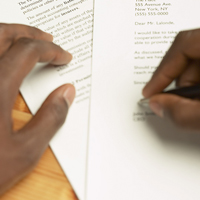Every business, no matter how big or small, should protect its brand. Its name, logo or other distinctive mark is the way it is able to distinguish its goods or services from those of its competitors.
Following news that the EU have reduced the cost of registering a trademark by 40%, now is the perfect time to find out more and to make sure that your business is protected.
If your business is successful, competitors may well try to copy your brand. There are two ways by law that you can stop them from doing so. First under the law is passing off. For this, you need to show that you have acquired goodwill in your brand and another company has made a misrepresentation which has caused customers to be confused and you have suffered loss as a result.
The other way is if your company have a registered a trade-mark and another business infringes your registered trade-mark right. This is the preferable route for businesses, because passing off often involves compiling and proving a lot of evidence of goodwill (hard for a new business to show), customers actually being confused (again difficult to do), the deliberate decision by the other person to make a misrepresentation, and actual loss.
In short, passing off is costly and hard to prove In addition, registering a trade mark with a trade marks registry - which, contrary to popular belief, does not mean registering a company at Companies House - also gives your business exclusivity to that brand in respect of certain goods or services across the whole jurisdiction in which you have obtained registration (such as the UK).
Many businesses put off registering their brand because they have to prioritise spending and simply never get around to it. This is a misguided approach, because in the meantime someone else may have registered "your" brand, which will actually stop your firm from using it. The result of this is a costly re-branding exercise, and potentially having to pay damages.
Businesses applying to register a trade mark need to take several decisions, each of which affects the financial outlay. Trade mark protection is on a per territory basis - there is no such thing as a global registered trade mark. Another decision is whether to go for name alone, logo alone or a combination or.
The next decision will be which of the 45 classes of the register to apply in, as each class on the register represents different sorts of goods or services - for example class 36 on the register is financial services.
In the 1990s, the European Union introduced a system where you can obtain registered trade mark protection across the entire EU through a single Community Trade Mark application. This costs more than a single application for UK protection, but much less than separate registrations in a few EU countries. The system has proved popular, particularly since the EU has expanded to 27 member countries.
For those entrepreneurs considering registering a trade mark to protect their brand, there has just been some welcome news which will make it easier for you to apply for an EU-wide registration.
The EU has announced that it intends to cut the official application and registration costs for an application in up to three classes from €1,600 to €1,000. The change is intended to take effect in 2009. In making the announcement, the European Commissioner responsible for the internal market, Charlie McCreevy, specifically targeted SMEs as being most likely to benefit by these 40% savings.
If any business wanted an incentive to invest today to protect their brand, then the EU annoucment should have provided the push that was needed to ensure your business' trademarks are legally protected.
Paul Gershlick is a commercial, intellectual property and IT solicitor at Matthew Arnold & Baldwin. For more information visit www.mablaw.co.uk
Business Advice for all UK firms from starting a business to flotation
How to trademark your business

Post Date: December 5th, 2008





